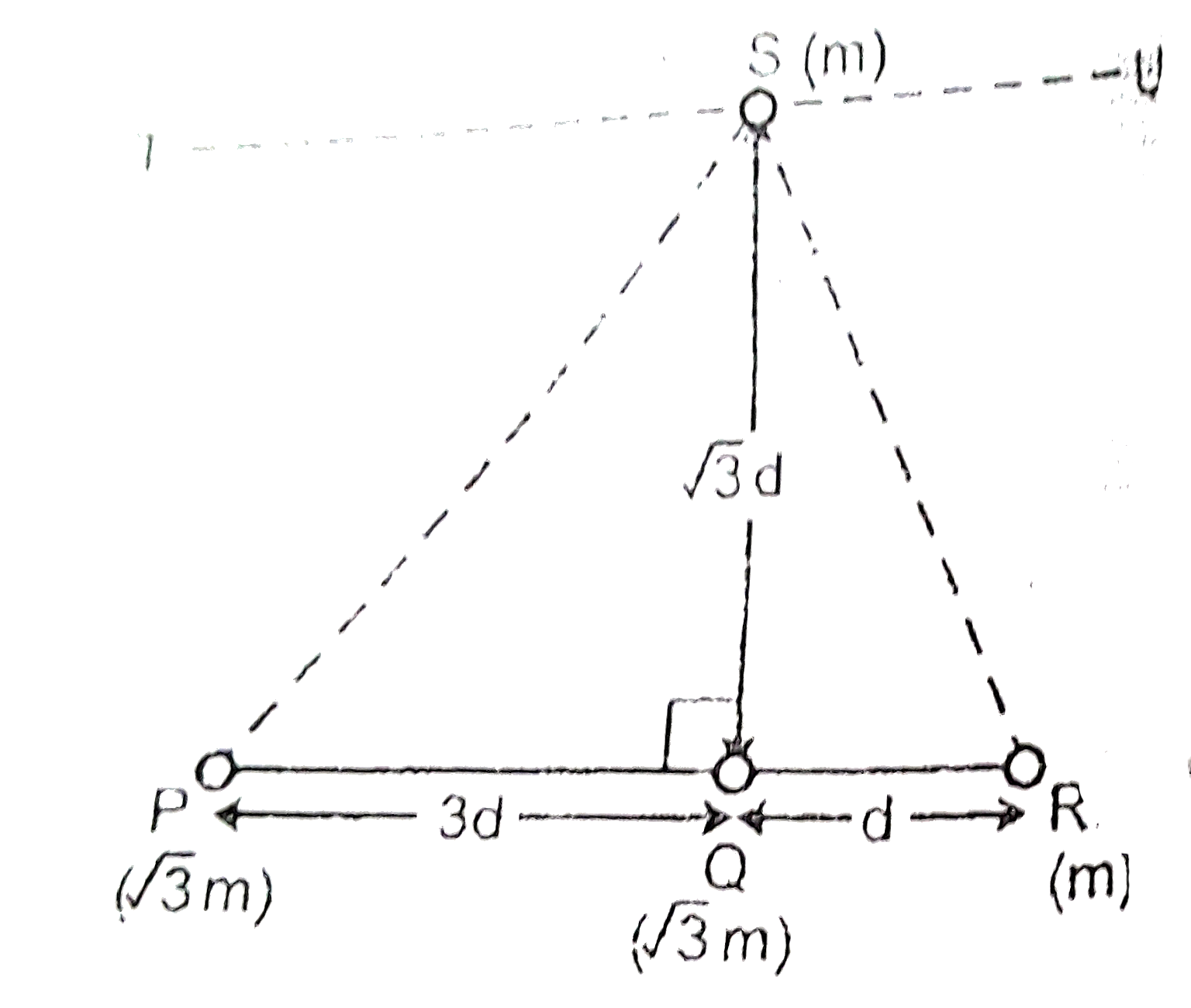Two spherical planets P and Q have the same uniform density ρ, masses MpandMQ and surface areas A and 4A respectively. A spherical planet R also has uniform density ρ and its mass is (MP+MQ). The escape velocities from the plantes P,Q and R are VPVQandVR respectively. Then
VQ gt VR gt VP
VR gt VQ gt VP
VR/VP=3
VP/VQ=12
The correct Answer is:B, D
The two are spherical planets of same density. Hence M∝R3 and A∝R2.
From ratio of the surface area given, we can write the following :
RQRP=√41=2
Now we can write the ratio of masses
MQMP=8
MR=MP+MQ=9MP
RR=3RP
Escape velocity can be written as
v=√2gR∝R
Hence we can write the following :
VR>VQ>VP and VP/VQ=12
hence options (b) and (d) are correct.
Topper's Solved these Questions
- GRAVITATIONBook:MODERN PUBLICATIONChapter:GRAVITATIONExercise:COMPETITION FILE ( D (Multiple Choice Questions))
Explore 8 Videos
- GRAVITATIONBook:MODERN PUBLICATIONChapter:GRAVITATIONExercise:COMPETITION FILE ( Assertion Reasion Type Questions)
Explore 12 Videos
- GRAVITATIONBook:MODERN PUBLICATIONChapter:GRAVITATIONExercise:COMPETITION FILE ( Jee (Advanced) for IIT Entrance)
Explore 6 Videos
- MATHEMATICAL TOOLSBook:MODERN PUBLICATIONChapter:MATHEMATICAL TOOLSExercise:PRACTICE PROBLEMS (10)
Explore 12 Videos
Similar Questions
The radius of a planet is double that of the earth but then average densities are the same. If the escape velocities at the planet and at the earth are vP and vE respectively, then prove that vP=2vE.
View SolutionThere is a planet P mass 2M and mass of earth M density of earth to density of planet. Body weight in earth is W. Then the weight of object on planet P is
View Solution
Knowledge Check
The escape velocities of the two planets, of densities ρ1 and ρ2 and having same radius, are v1 and v2 respectively. Then
Av1v2=ρ1ρ2Bv2v1=ρ2ρ1Cv1v2=(ρ1ρ2)2Dv1v2=√ρ1ρ2The masses of two spherical planets A and B are MA and MB, surface areas are S and 9 S respectively. The mass of a spherical planet C is (MA+MB). If the densities of all the planets A, B, C are same, then the escape velocities VA, VB, VC from the surface of these planets follow:
AVC gt VB gt VABVB = 3VACVC lt VB lt VADVC gt VB lt VAThree particales P,Q and R are placedd as per given Masses of P,Q and R are √3m√3m and m respectively The gravitational force on a fourth particle 'S' of mass m is equal to
 .A√3GM22d2 in ST direction onlyB√3GM22d2 in SQ direction and √3GM22d2 in SU directionC√3GM22d2 in SQ directiononlyD√3GM22d2 in SQ direction and √3GM22d2 in ST direction .
.A√3GM22d2 in ST direction onlyB√3GM22d2 in SQ direction and √3GM22d2 in SU directionC√3GM22d2 in SQ directiononlyD√3GM22d2 in SQ direction and √3GM22d2 in ST direction .
The radii of two planets are R and 2R respectively and their densities p and ρ/2 respectively, What is the ratio of acceleration due to gravity at their surfaces ?
View SolutionTwo particles p and q located at distances rp and rq respectively from the centre of a rotating disc such that rp>rq.
View SolutionTwo planets of masses M and M2 have radii R and R2 respectively. If ratio of escape velocities from their surfaces v1v2 is n4 , then find n :
View SolutionA particle at a distance r from the centre of a uniform spherical planet of mass M radius R (ltr) has a velocity of magnitude v.
View SolutionA planet is revolving around the sun. its distance from the sun at apogee is rA and that at perigee is rp. The masses of planet and sun are 'm' and M respectively, VA is the velocity of planet at apogee and VP is at perigee respectively and T is the time period of revolution of planet around the sun, then identify the wrong answer.
View Solution